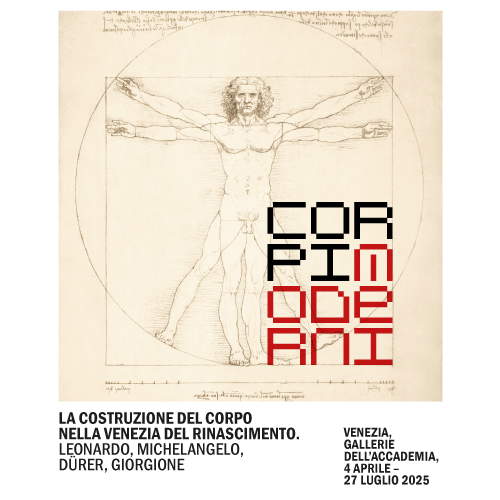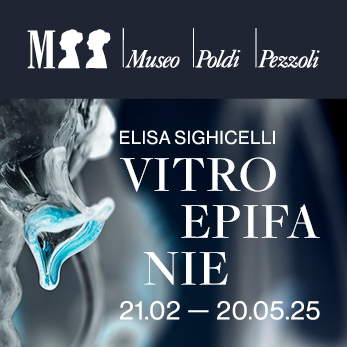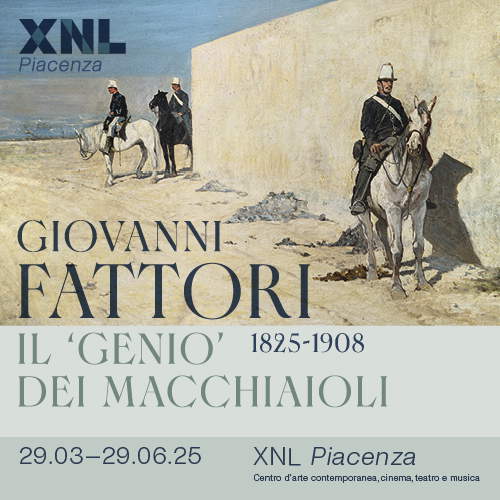Venice, major discovery at Rialto: 16th century mural painting resurfaces on Grand Canal
In the heart of Venice, under the daily eyes of thousands of passersby and tourists, a forgotten fragment of history and art was hiding. Now, thanks to a careful and shared intervention, that fragment has returned to light. In fact, during restoration work atHotel Rialto, overlooking the Riva del Ferro at the Rialto Bridge, a precious 16th-century mural painting, which had remained hidden for centuries under layers of plaster, was discovered.
This is an extraordinary laceration not only for the artistic quality of the work, but also for its rarity: very few evidence survives today of the pictorial decorations that once embellished the facades of many Venetian buildings. This discovery thus represents an open window on a largely lost heritage, and on a decorative practice widespread over the centuries but almost completely erased by time and weathering.
The recovery was made possible thanks to the intervention of restorers from Seres s.r.l., as part of the work entrusted to the company G. Salmistrari s.r.l. and under the supervision and collaboration of officials from the Soprintendenza Archeologia, Belle Arti e Paesaggio for the Municipality of Venice and the Lagoon. Crucial was the willingness of the property’s owner, who enthusiastically welcomed the opportunity to return this fragment of memory to the city.
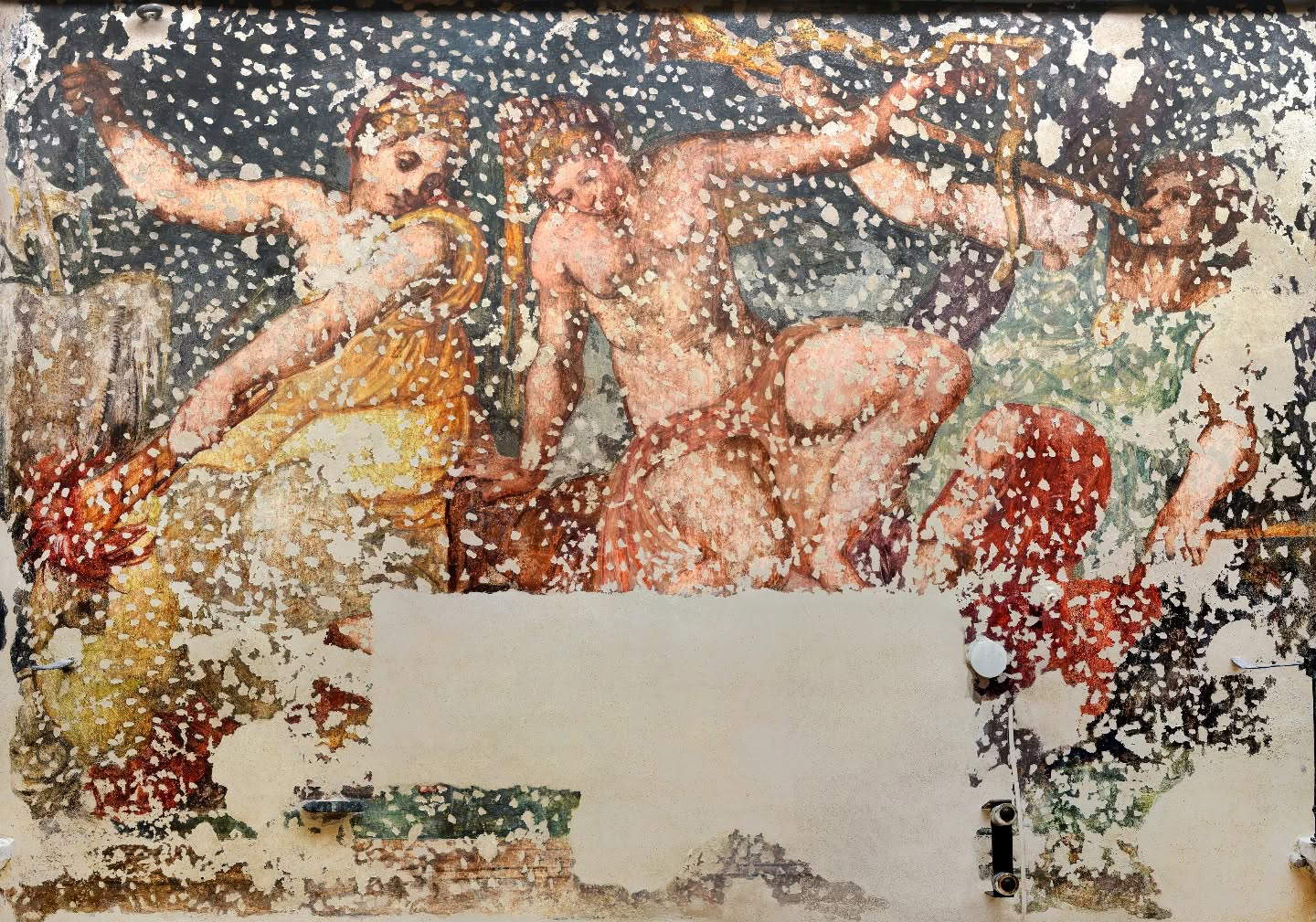
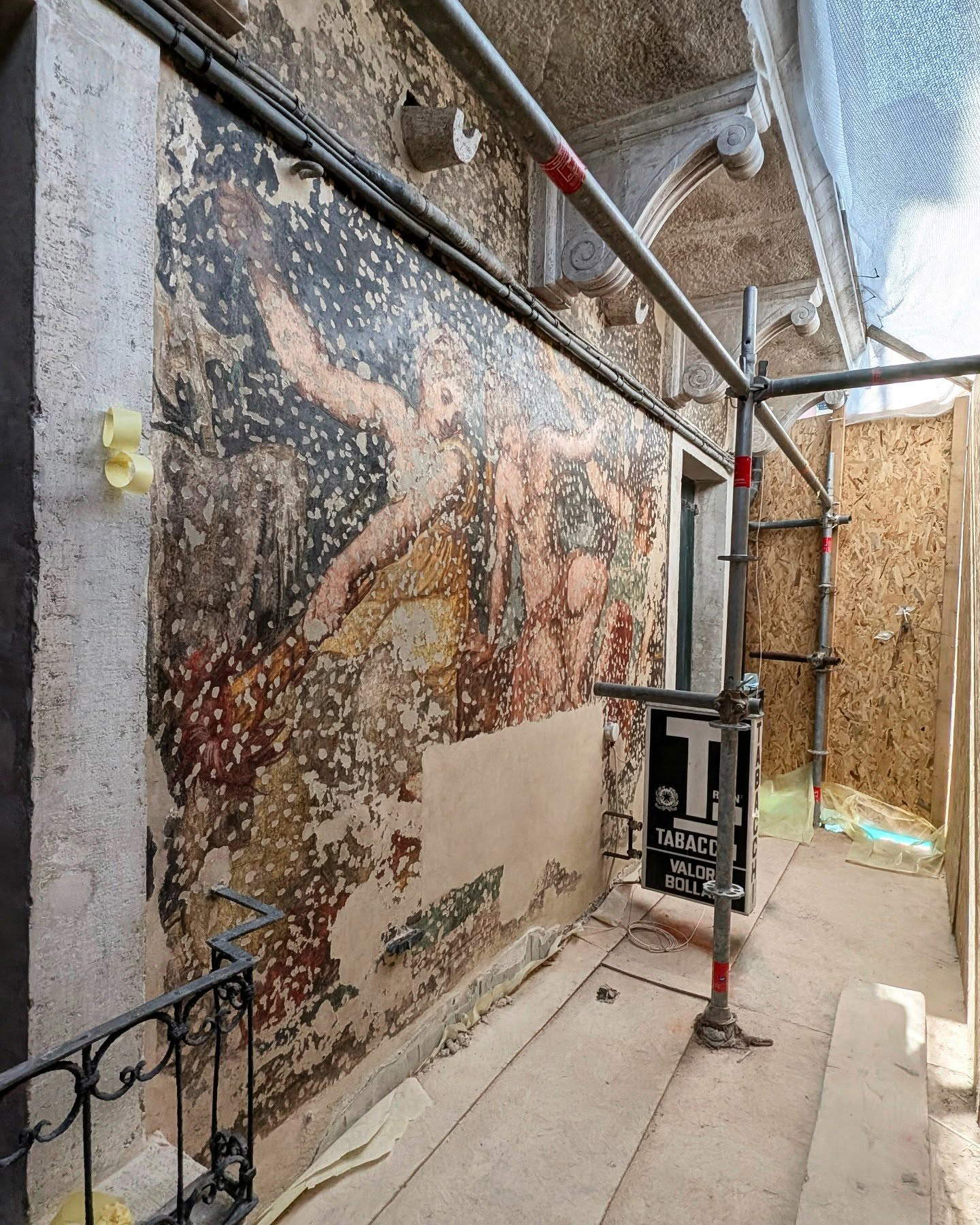
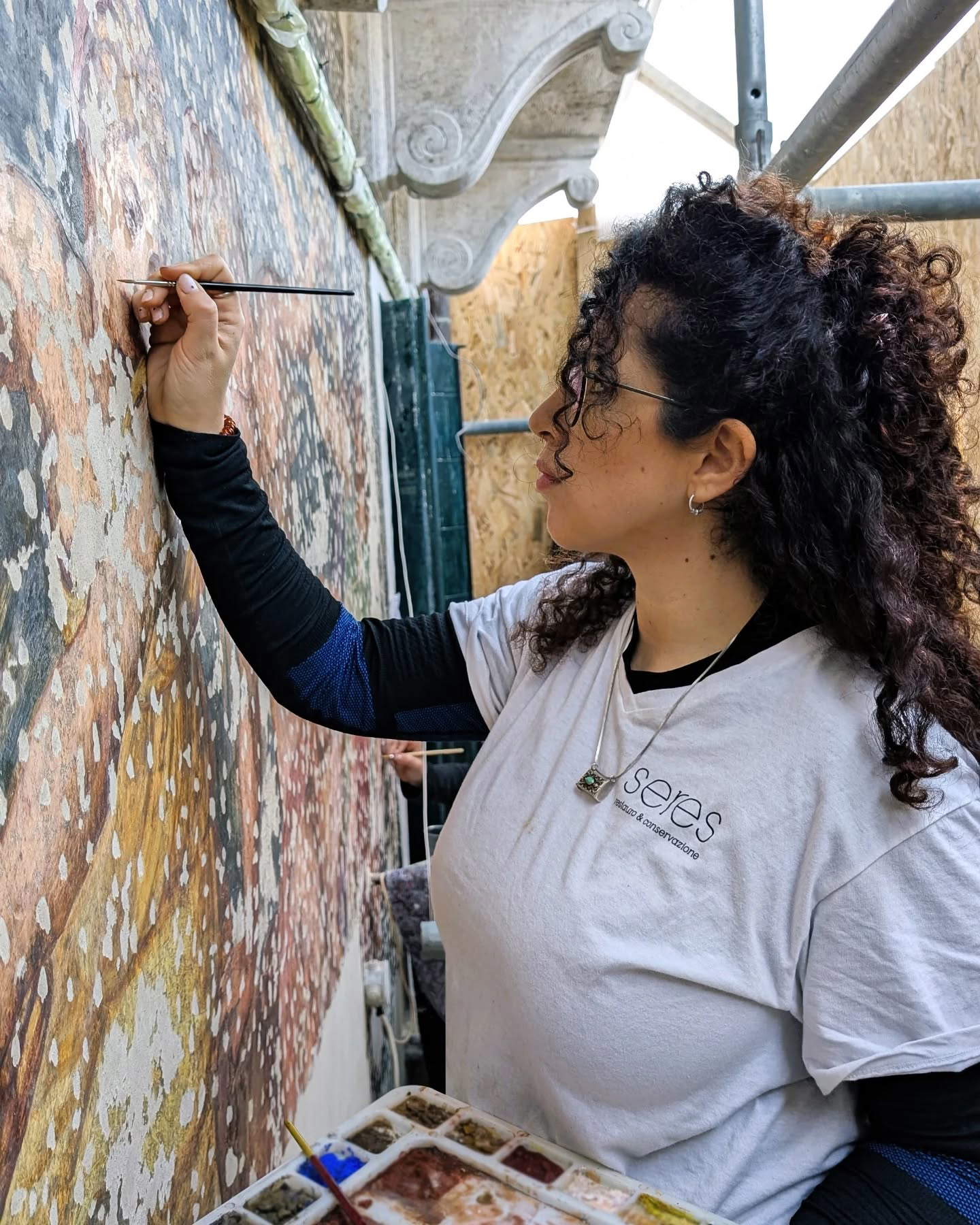
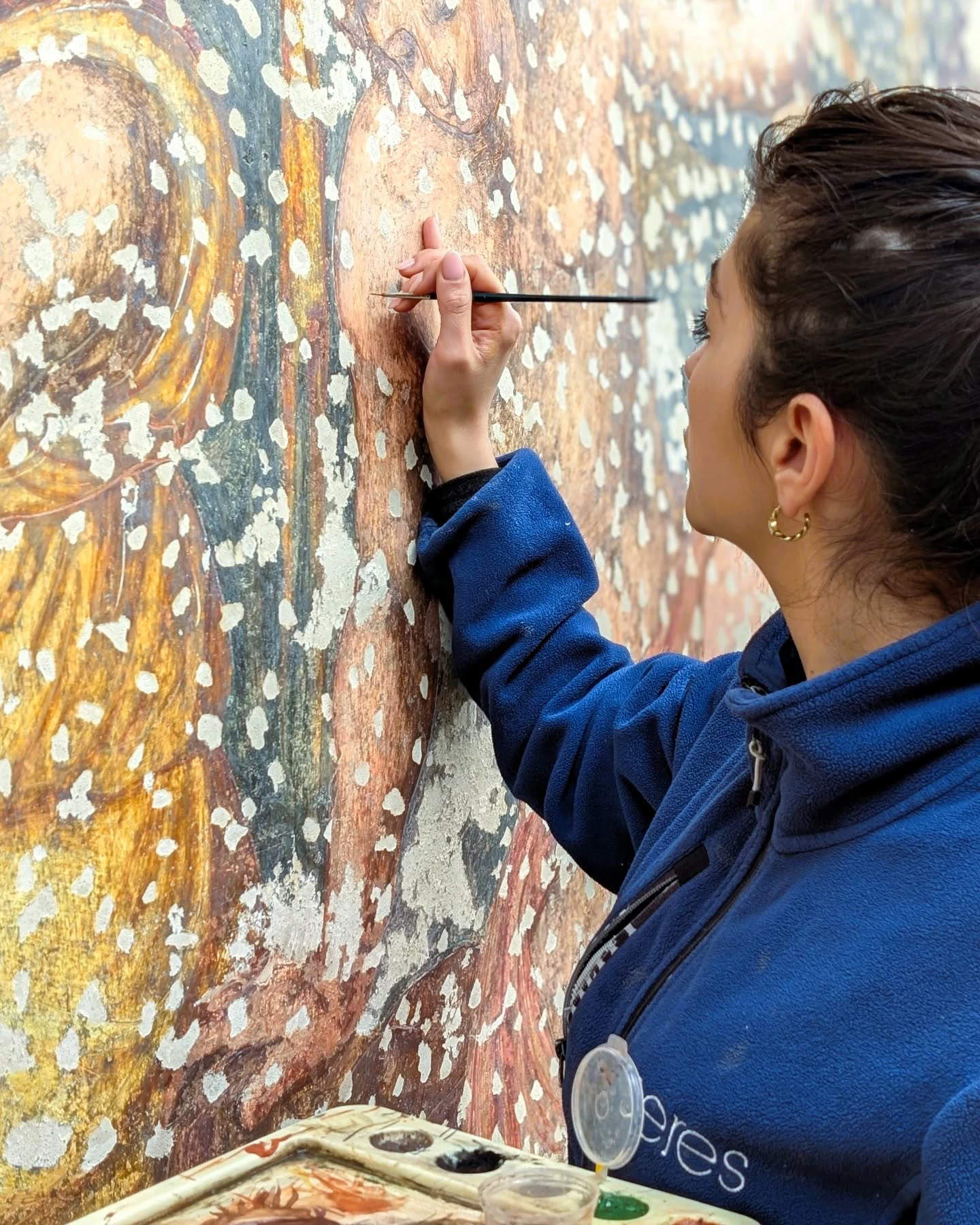
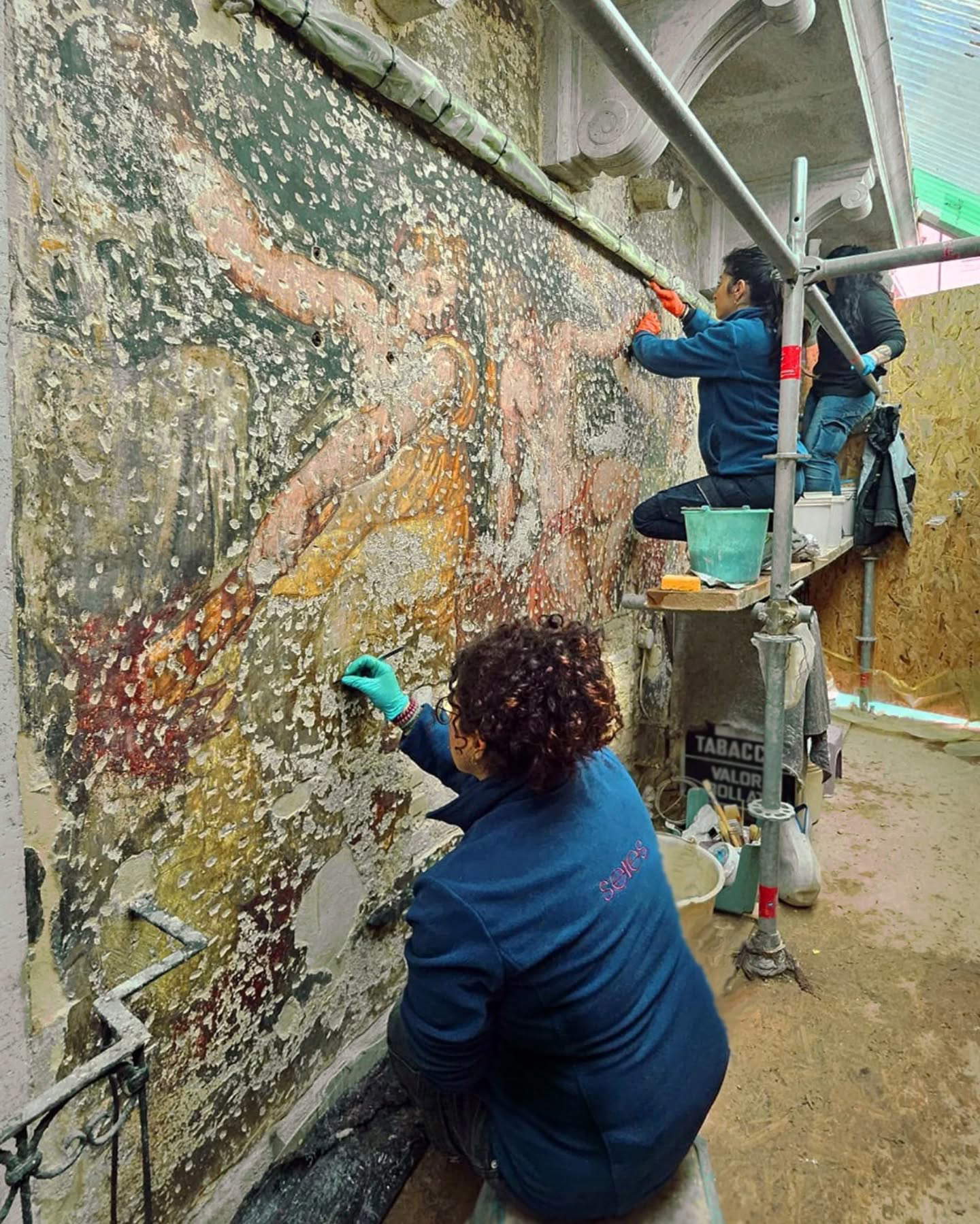
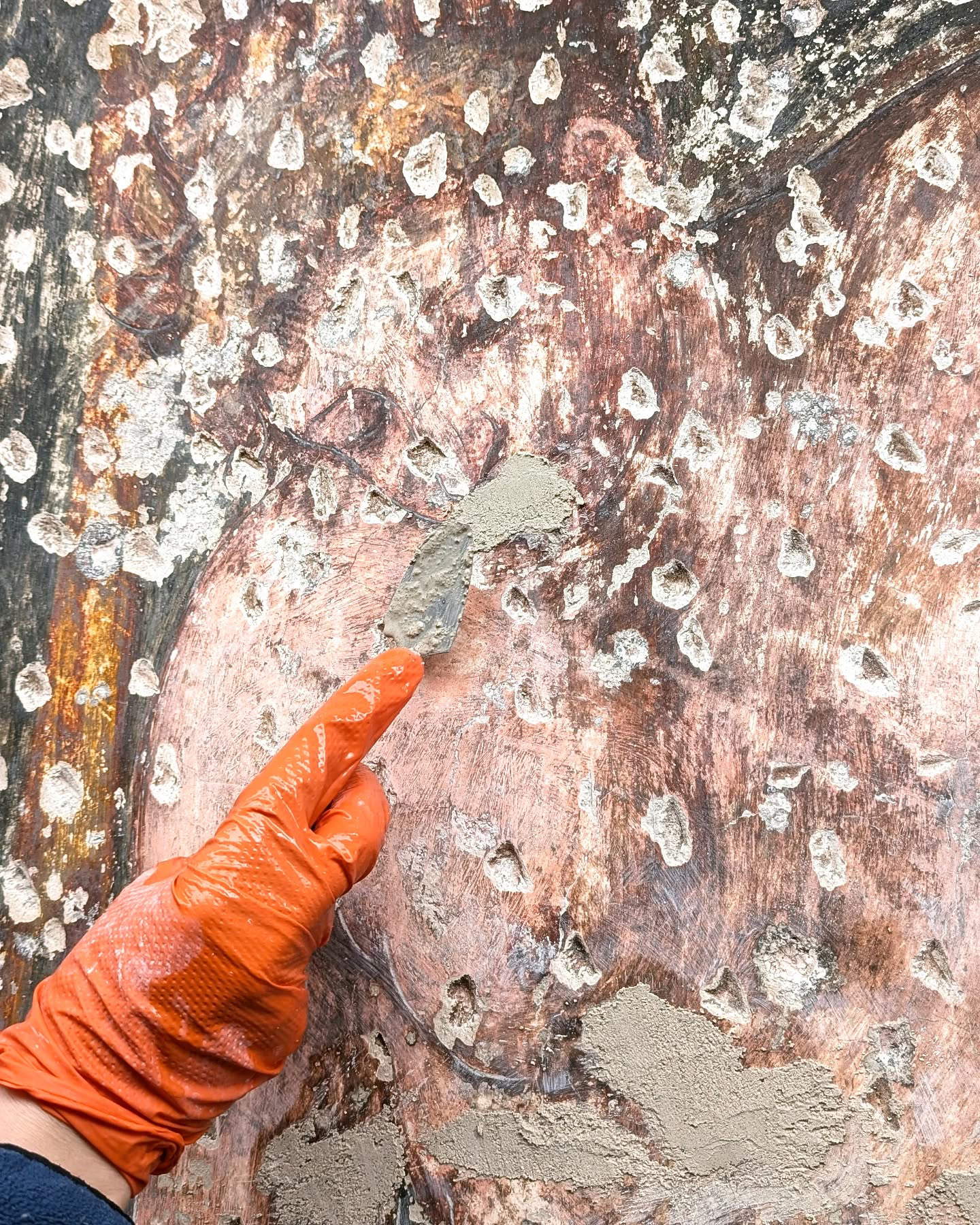
The mural painting, executed “a secco” with great skill, depicts three allegorical, almost life-size figures, each with symbolic attributes that are still being studied. The work, by an anonymous hand, is distinguished by a refined style and the use of a brilliant chromatic range that has regained intensity thanks to meticulous differentiated cleaning, designed to respect the delicacy of the pigments and the fragility of the surface.
The painting was in a critical condition: direct exposure to the Grand Canal, with its humidity and the constant action of saltiness, had compromised the legibility of the image. However, the conservation intervention made it possible to recover not only the compositional lines but also the expressive force of a work of great formal quality.
Art-historical and iconographic investigations are currently underway. Scholars are trying to reconstruct the original context of the decoration, hypothesizing its commissioning, function and cultural references. The results of the research will be published in the next issue of the Chronicles of the Venice Superintendency. Activities and research.
Among the most significant aspects of this operation is the synergy between public institutions and private entities. The design and technical direction of the intervention was entrusted to the restorer Martina Serafin, while site responsibility for the works in category OS2A was assumed by architect Beatrice Pitter. Also working in the field were Giorgia Turri, Marina Vece, Alessia Grasso, Rosa Zuffi and Paolo Roma, who restored the work to its original legibility. The team worked in close contact with officials from the Soprintendenza, particularly Dr. Devis Valenti, Dr. Giulia Altissimo, Dr. Valeria Saccarola and Dr. Anna De Stefano, who followed the progress of the recovery.
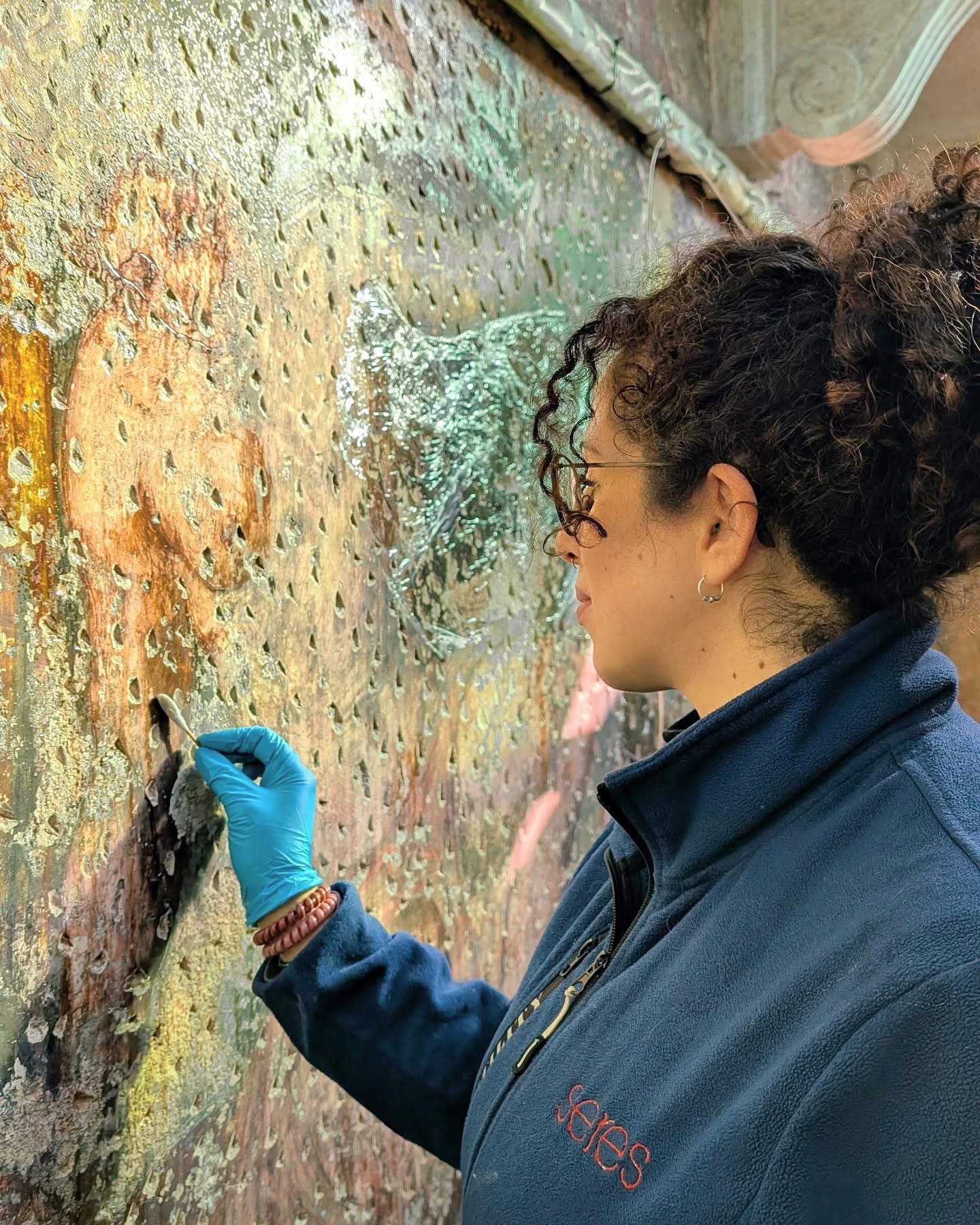
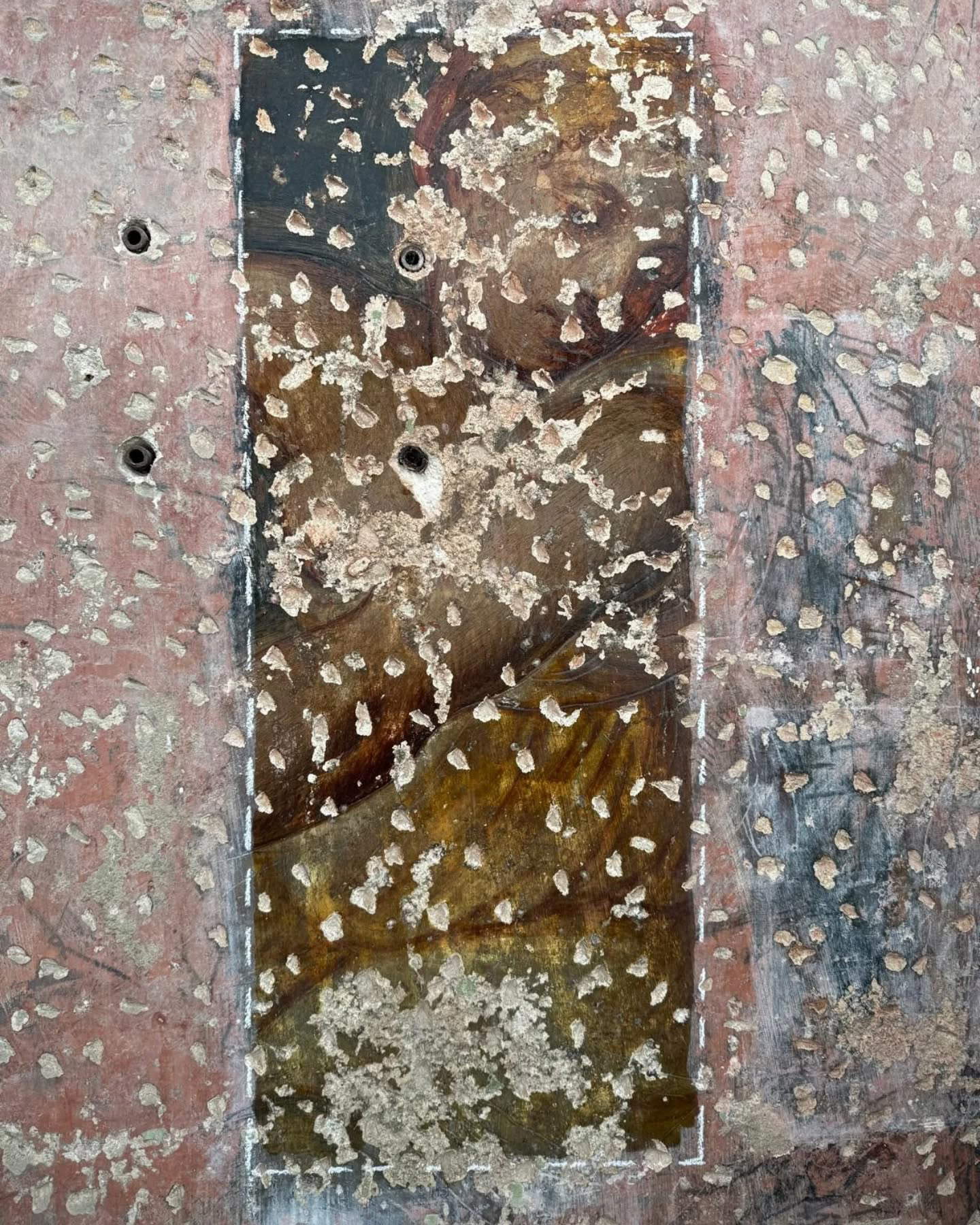
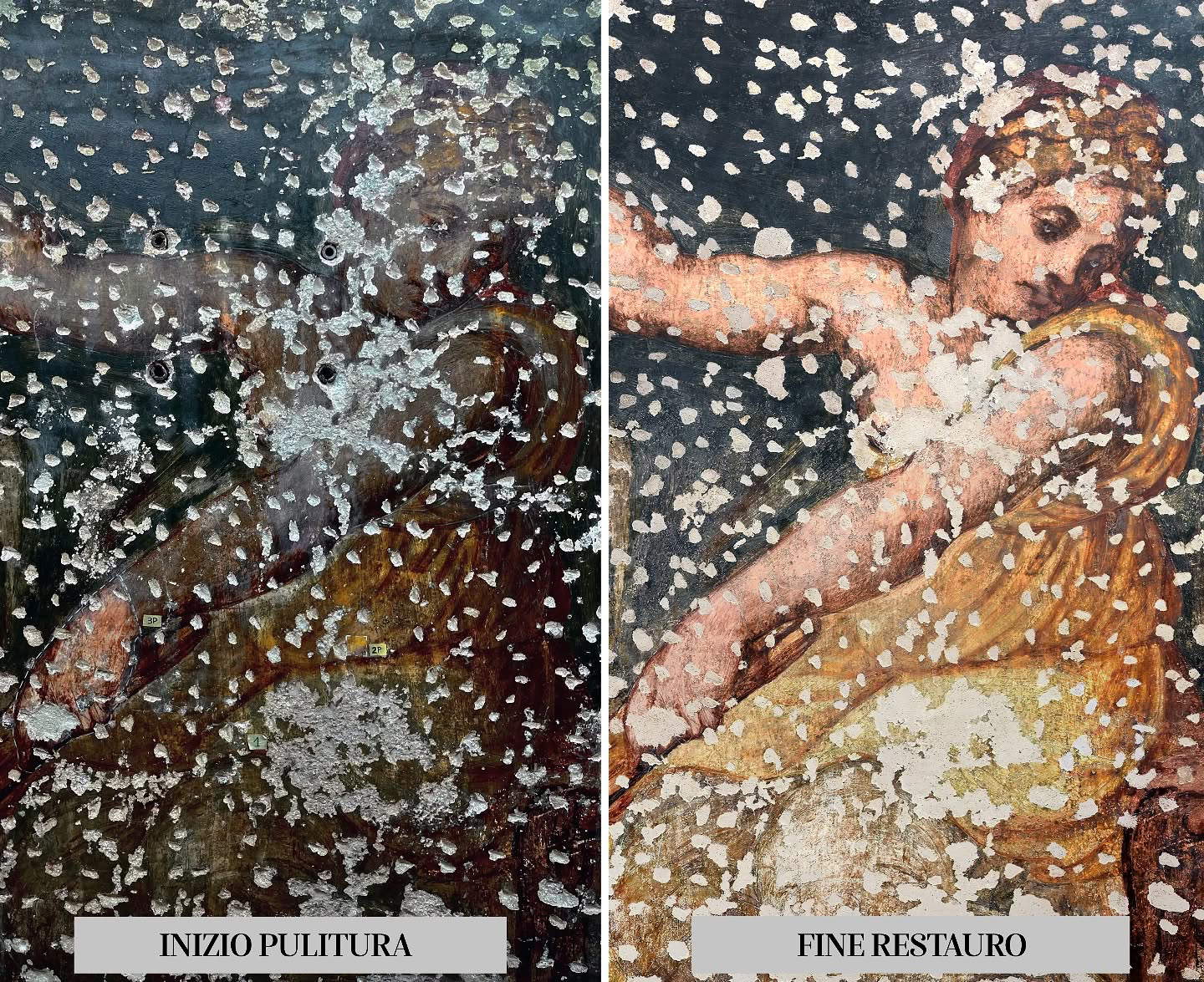
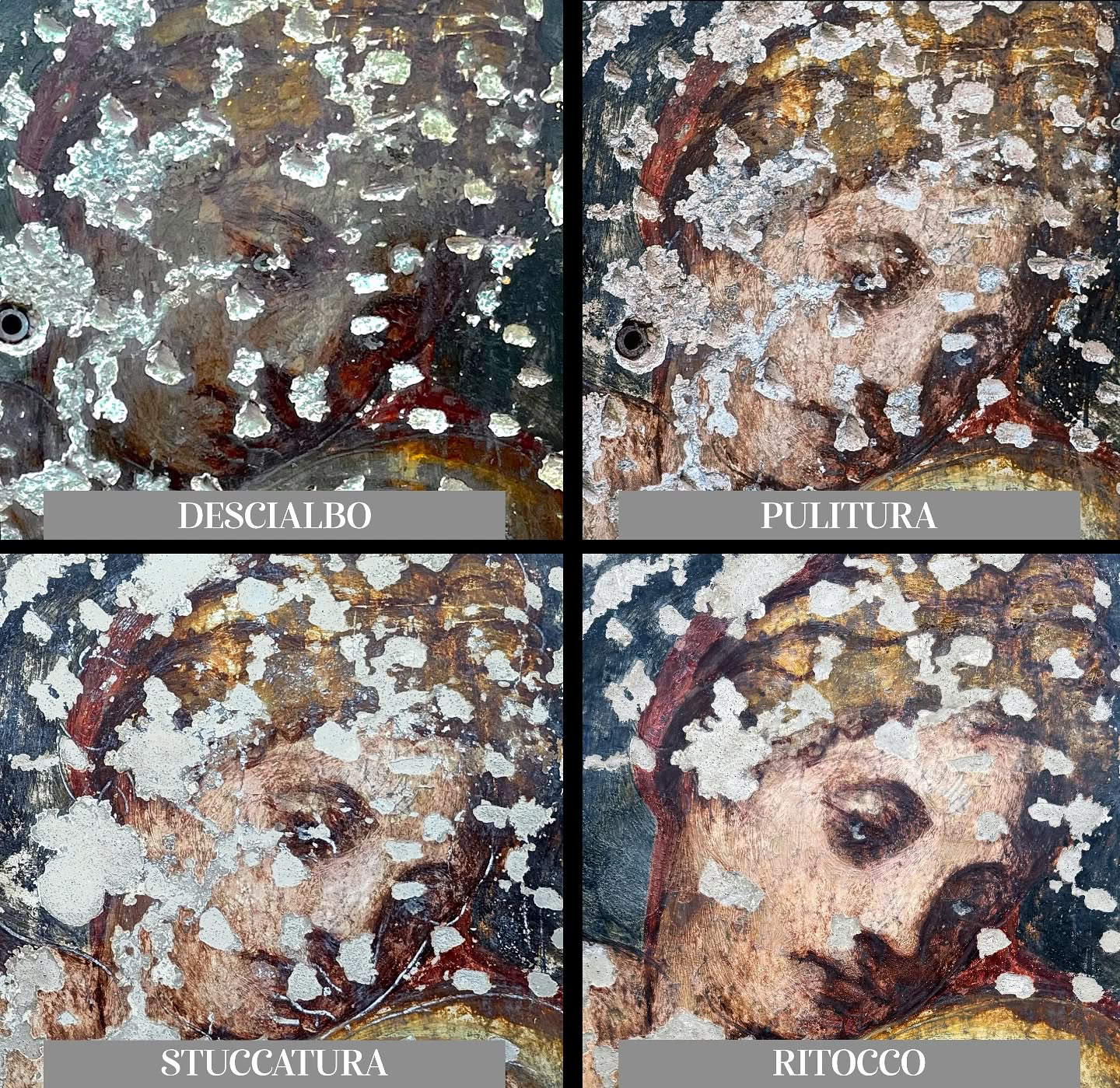
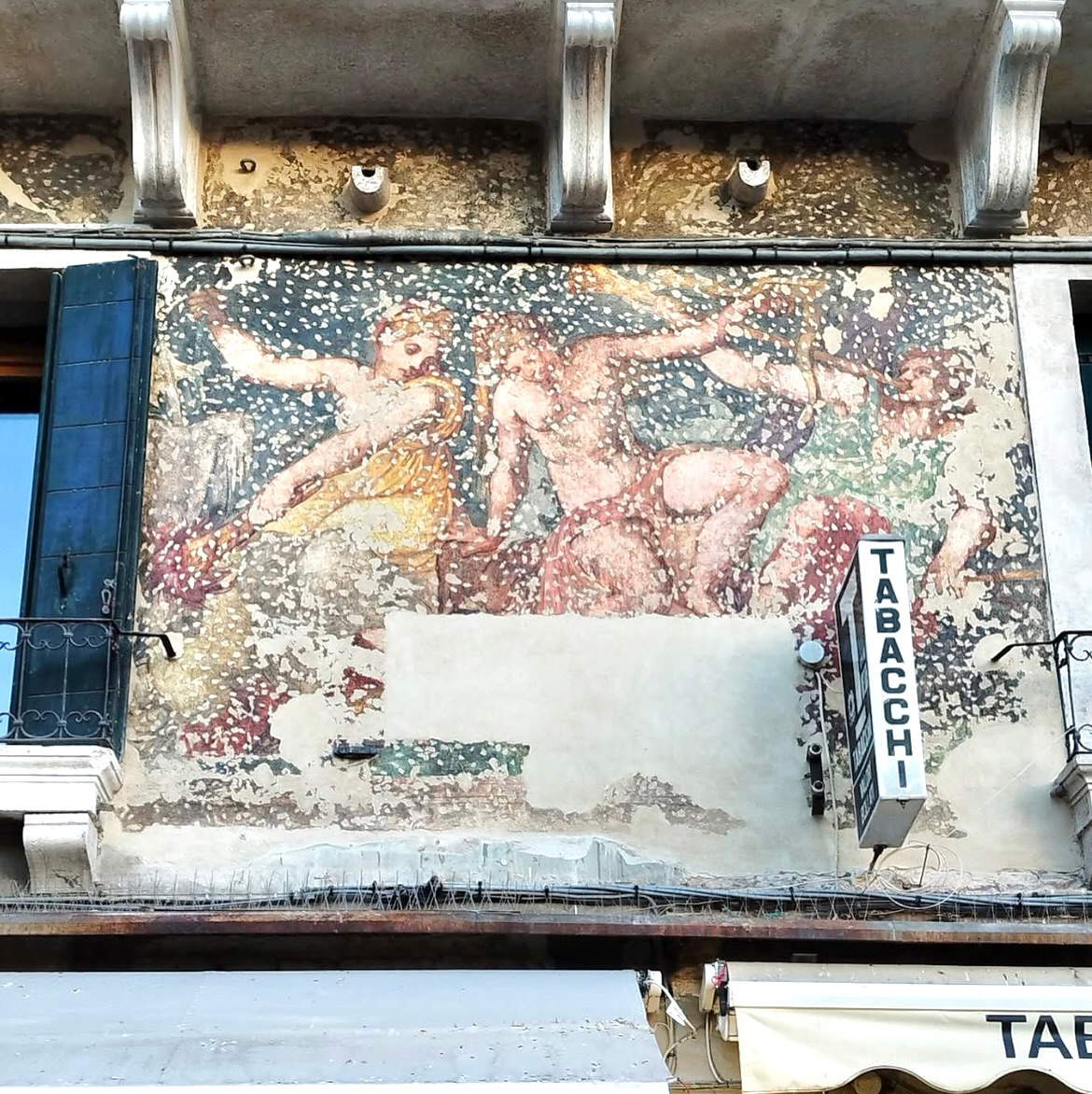
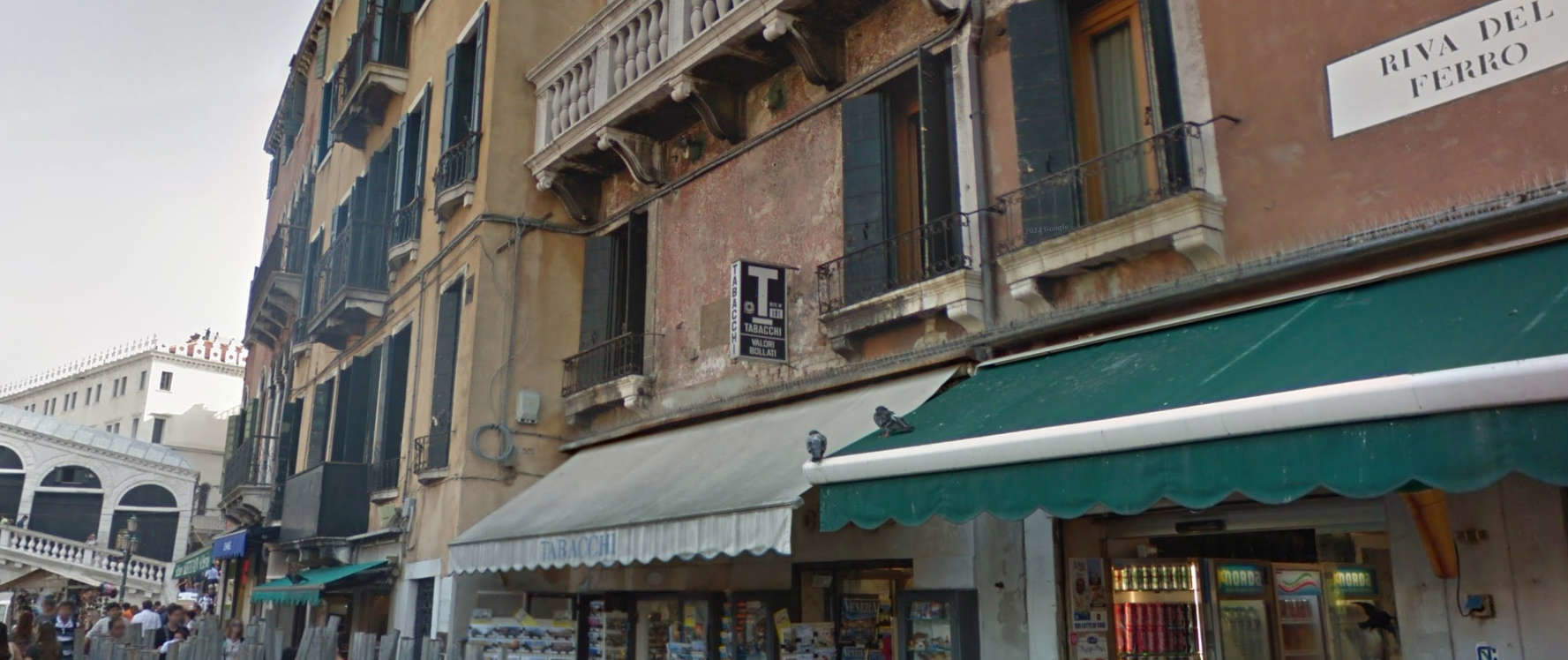
The restoration is not just a technical operation: it is an act of giving back to the city and the community. Not surprisingly, one of the hopes expressed by the restorers is that the work can soon be enhanced in terms of its public enjoyment as well, by removing cables and signs that currently obstruct its full visibility from the Iron Bank.
For Seres s.r.l., the rediscovery of this fresco represents much more than a professional success: it is concrete proof that protecting cultural heritage also means gently and respectfully bringing to the surface the forgotten beauties hidden in the folds of the city. “A unique thrill in the heart of Venice,” the company writes on its Facebook page. “We had the honor of unearthing a 16th-century mural painting that had been hidden for centuries under layers of plaster. This extraordinary discovery emerged during restoration work on the facades of the ’Condominio Rialto’, overlooking the Grand Canal, carried out in collaboration with G.Salmistrari srl. Thanks to the sensitivity of the client and the joint work with the officials of the Soprintendenza Archeologia Belle Arti e Paesaggio for the Municipality of Venice and the Lagoon, we had the privilege of restoring this mural painting of incredible artistic quality, refined style and composed of a brilliant range of colors.”
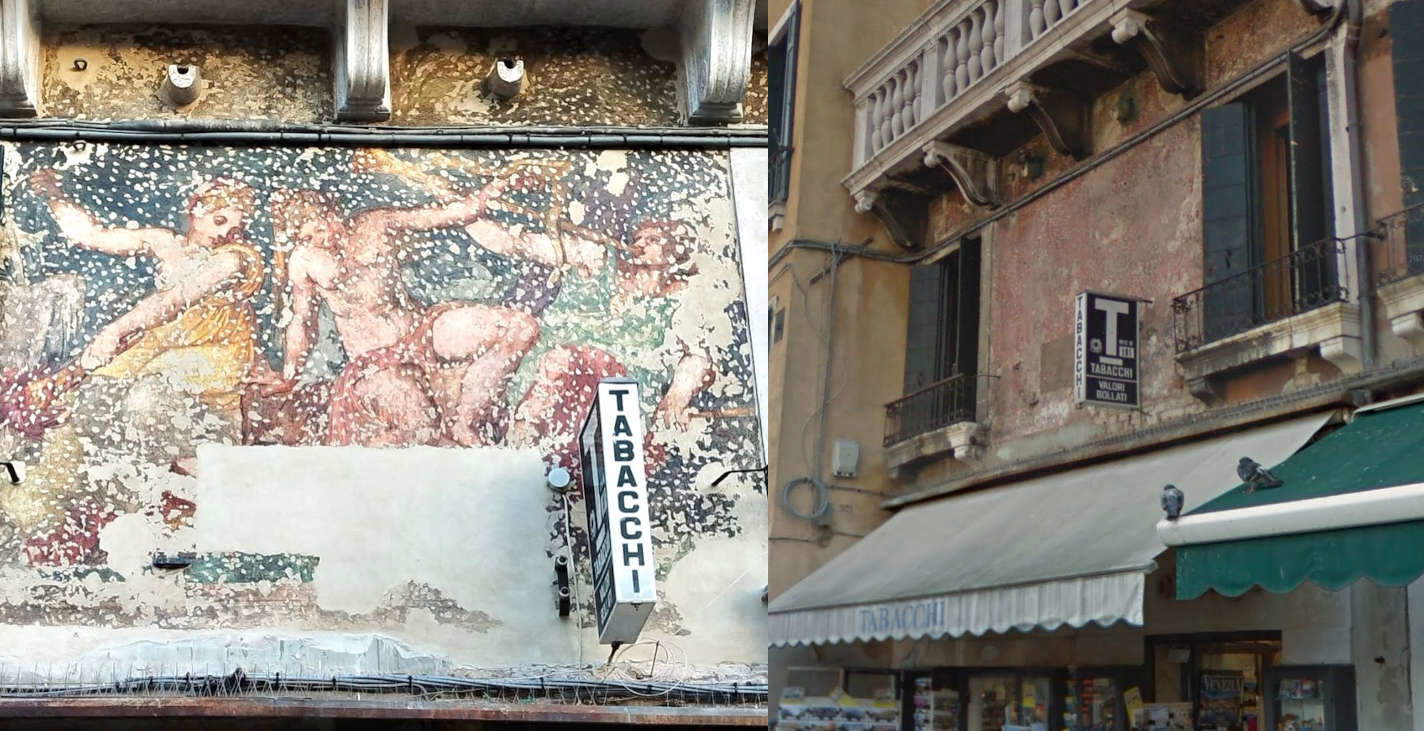 |
| Venice, major discovery at Rialto: 16th century mural painting resurfaces on Grand Canal |
Warning: the translation into English of the original Italian article was created using automatic tools. We undertake to review all articles, but we do not guarantee the total absence of inaccuracies in the translation due to the program. You can find the original by clicking on the ITA button. If you find any mistake,please contact us.





